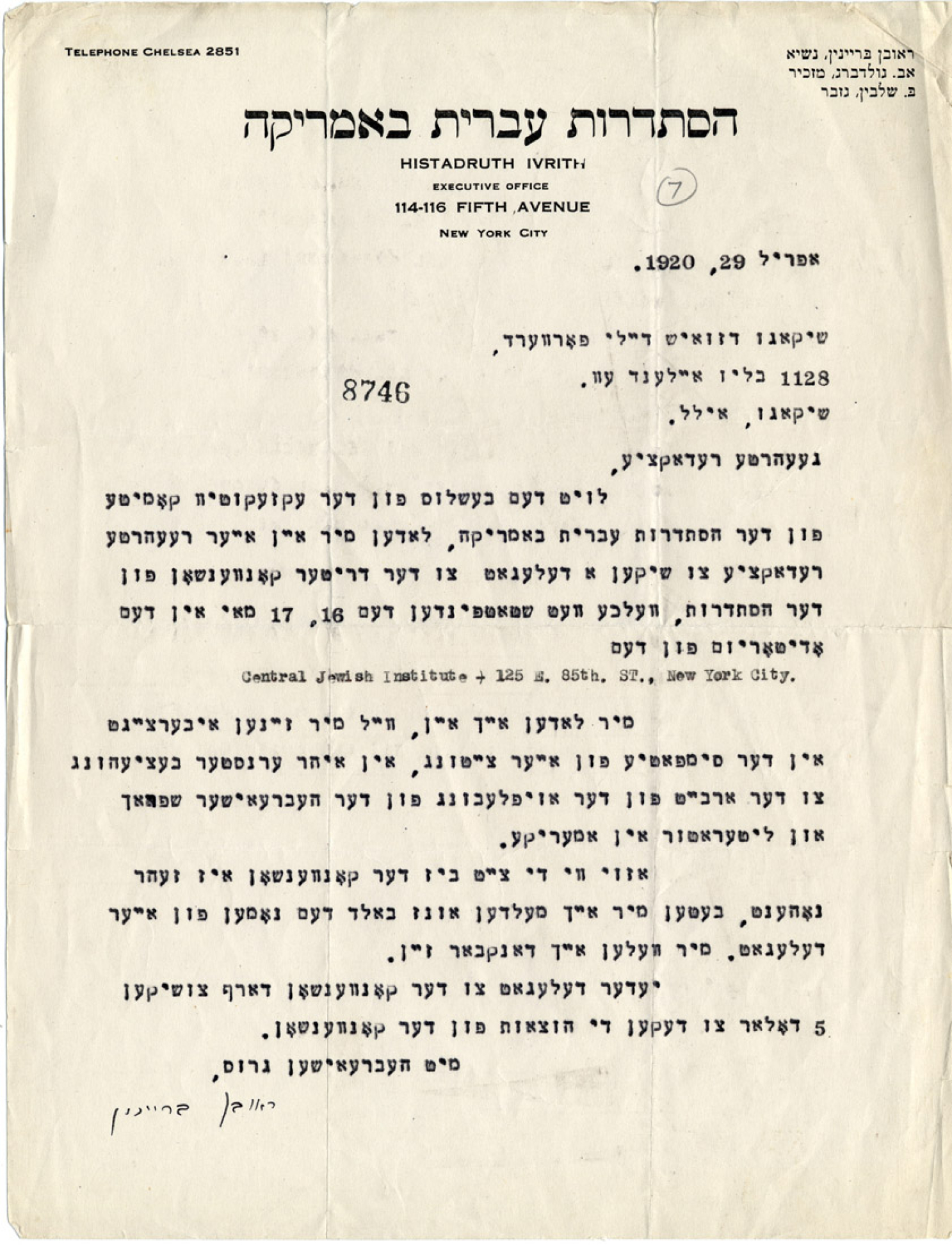Di gantse velt af a firmeblank: The World of Jewish Letterheads
Assemble the letterheads of Jewish organizations, institutions, and individuals in Europe, North and South America, and Palestine from the 1890s to the eve of World War II in 1939 and you have a portrait of the Jewish world: transnational; diverse in language, political, and religious orientation; and flourishing.
Di gantse velt af a firmeblank (The Whole World on a Letterhead) is an experiment in building that portrait. Here, we hope to bring you several times a month, a different example of letterhead from a single collection in the YIVO Archives, the Papers of Kalman Marmor.
Marmor, a Yiddish writer and cultural activist, was born October 11, 1879 in Mayshigola, Vilna Gubernia (today Maišiagala, Lithuania). In 1906, he settled in the U.S. Initially active with the Labor Zionist movement, he later became a Communist. He was an organizer of the 1937 World Yiddish Culture Congress, cultural director of the International Workers Order, and a contributor to the Communist Yiddish newspaper, Morgn Frayhayt. Between 1933 and 1936, he lived in Kiev, where he worked at the Institute of Jewish Proletarian Culture and prepared scholarly editions of the work of American Yiddish poets and writers. During Stalin’s Great Terror, the Institute was liquidated, and much of its leadership was arrested and executed. Marmor, an American citizen, returned to the U.S. He died in Los Angeles in 1956.
His papers at YIVO contain several thousand letters from the turn of the 20th century to the 1950s. He had an astonishingly diverse array of correspondents, not limited to Zionist and Communist activists.

Letter from Reuven Brainin of the Histadruth Ivrit of America in New York to Kalman Marmor in Chicago, April 29, 1920. (YIVO RG 205, Folder 108)
The Histadruth Ivrit of America, an organization that promoted Hebrew among American Jews, was established in 1916. Eliezer Ben Yehuda, the father of modern Hebrew, and leading Zionists, including David Ben Gurion, participated in its founding convention in New York in 1917. The Histadruth published a newspaper Hadoar (The Post) and established a publishing house, Ogen (Anchor). As an organization, it survived into the 21st century, closing up shop only in 2005. In this letter, Reuven Brainin, a well-known Hebrew writer and “crusader for Hebrew,” invites the Chicago branch of the Forverts (Forward) to send a delegation to the Histadruth’s third convention.
Series curated by Roberta Newman; Images digitized by Vital Zajka.